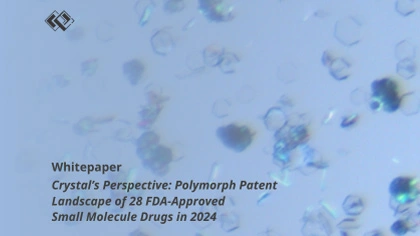20 Jun 2025
We will provide our valued customers with analytical chemistry research and quality control services for NCEs throughout their life cycle from the early clinical stage to commercial manufacturing.
Analytical Method Development and Validation
Guided by Quality by Design (QbD), we provide comprehensive analytical method development and validation in accordance with ICH Q2 based on Critical Quality Attributes (CQA) to support oral dosage form development. We also perform life cycle management to ensure quality research and control and provide accurate and reliable data at different drug development stages.
In addition to routine analysis, we support in vitro dissolution method development for insoluble compounds, e.g. amorphous solid dispersion, by understanding the fundamentals of dissolution mechanism and providing in vitro dissolution data to build the IVIVC research. We also provide genotoxic impurities, elemental impurities, and microbial limit testing services.
Forced degradation study
Stability indicating assay and related substance method
Content uniformity
Residual solvents
Genotoxic impurity
Method Validation according to ICH Q2
Novel analytical methods to enable formulation screening and optimization
In-vitro dissolution characterization to support formulation development and commercialization
Product Release
Crystal Pharmatech provides analytical services by strictly following the cGMP regulations of NMPA, FDA, and EMA, as well as Technical and Quality Agreement (TQA) with our customers. We test and release drug products according to these quality standards to meet the regulatory requirements of countries and regions where clinical supplies and commercial products are distributed.
Assay, identification, and related substance
Dissolution
Content uniformity
Water content
Elemental impurities
Residual solvent
Microbial limit test (MLT)
Stability Study
Stabilities studies, regardless of preformulation, early, or late stage developments, are critical for formulation development. CFS provide stability services at each development stage, including protocol design and testing of accelerated stability studies for perform and prototype development, probe and IND stability for RED at early development stages, stability study at late stage, e.g. Product Characterization Study (PCS), Formal Stability Study (FSS), for packaging definition, stability of intermediates (e.g. Spray Dried Intermediates, SDI), the hold-time stability of the drug products in production, in-use stability testing, stability of storage conditions and photostability testing based on ICH Q1A/Q1B, reevaluation of stability beyond the expiry date, and stability study of drug products after commercial launch etc. These stability data provide strong evidence for packaging selection, expiration date set, and lifecycle stability evaluation of drug products.
Probe and IND stability study for clinical supplies
Primary, registration, and formal stability study (FSS)
Product characterization study for packaging definition (PCS)
In-use stability
Photostability
Hold time stability
Time out of storage (TOS) and re-evaluation date (RED)
Cover all ICH conditions and specific conditions
Compatibility Study
Excipients play an important role in drug release, drug stability and manufacture of drug products. Crystal Pharmatech helps customers select the appropriate excipients in early formulation development through our comprehensive understanding of molecule and material properties. Analytical science supports formulation composition design by investigating the interactions between API and excipients.
We also provide compatibility study between packaging components and drug products, helping our customers choose appropriate packaging materials and evaluate the risk through well-designed extractable and leachable studies.
API-Excipient-Packaging Release
Crystal Pharmatech provides release testing service for API, excipients and packaging components according to the regulatory and GMP requirement at different development stages, ensuring product quality and safety by controlling from the original source.
.webp)
